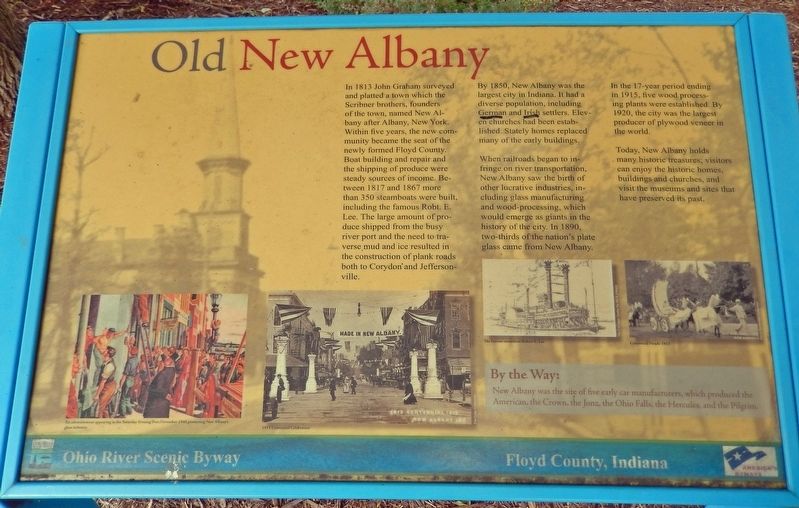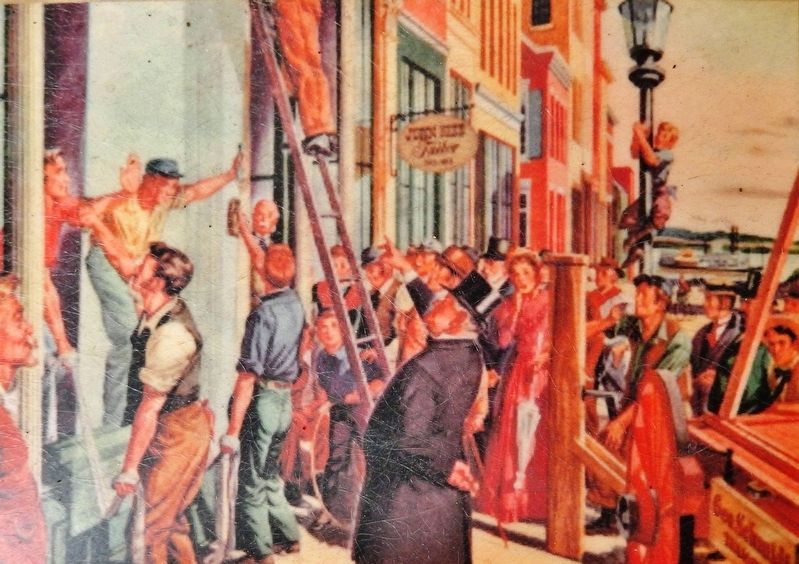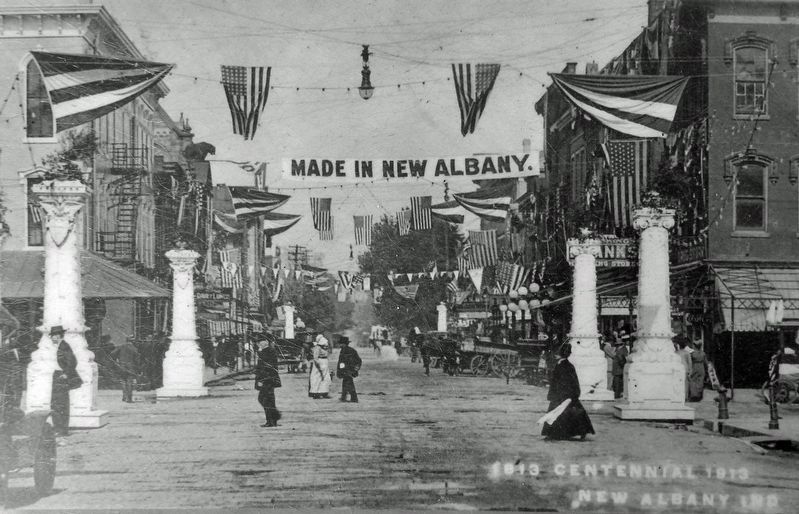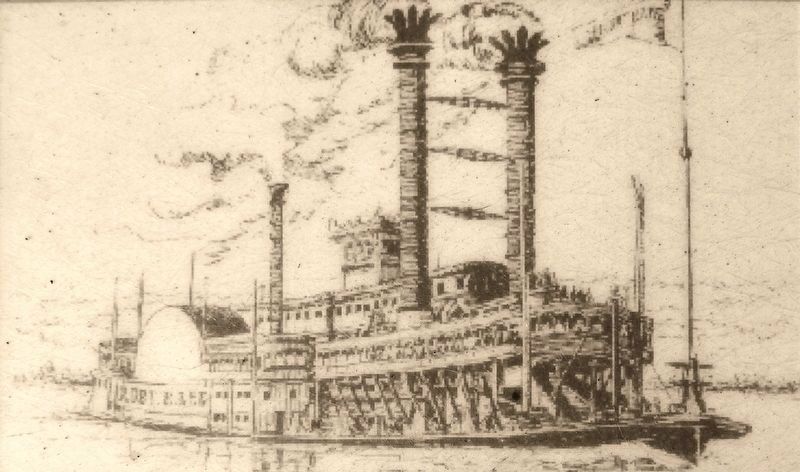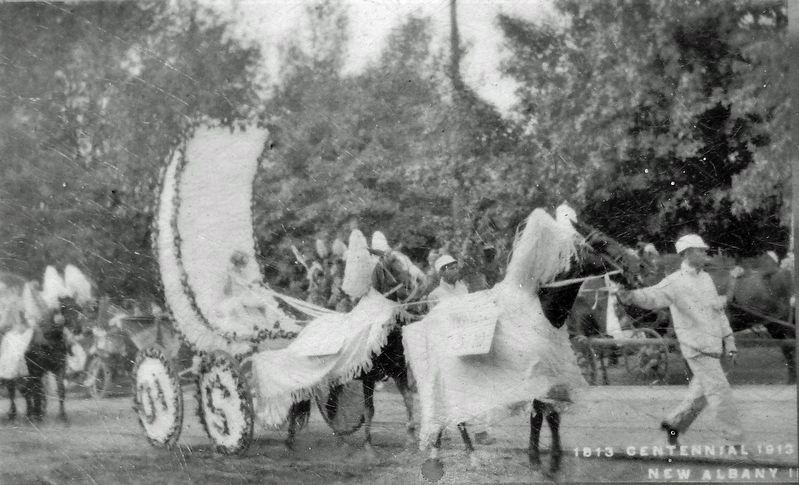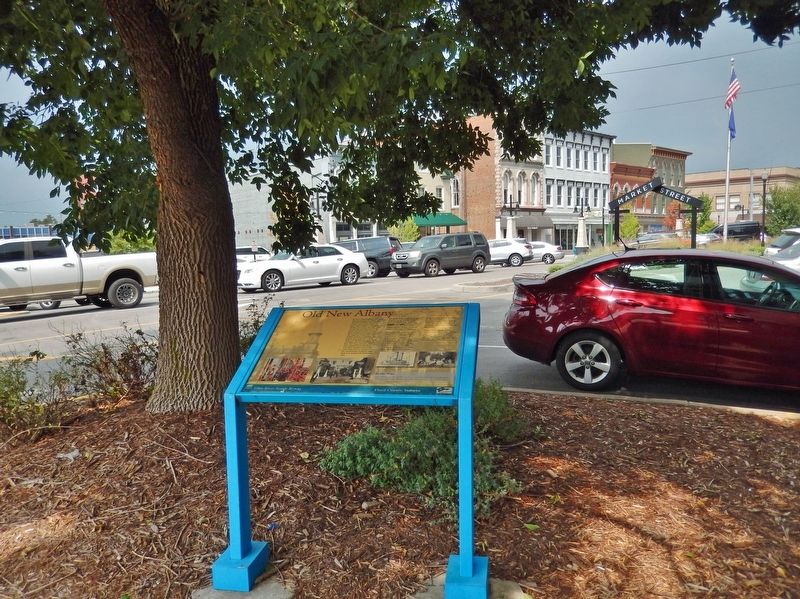New Albany in Floyd County, Indiana — The American Midwest (Great Lakes)
Old New Albany
Floyd County Indiana
In 1813 John Graham surveyed and platted a town which the Scribner brothers, founders of the town, named New Albany after Albany, New York. Within five years, the new community became the seat of the newly formed Floyd County. Boat building and repair and the shipping of produce were steady sources of income. Between 1817 and 1867 more than 350 steamboats were built, including the famous Robt. E. Lee. The large amount of produce shipped from the busy river port and the need to traverse mud and ice resulted in the construction of plank roads both to Corydon and Jeffersonville.
By 1850, New Albany was the largest city in Indiana. It had a diverse population, including German and Irish settlers. Eleven churches had been established. Stately homes replaced many of the early buildings.
When railroads began to infringe on river transportation, New Albany saw the birth of other lucrative industries, including glass manufacturing and wood-processing, which would emerge as giants in the history of the city. In 1890, two-thirds of the nation's plate glass came from New Albany.
In the 17-year period ending in 1915, five wood processing plants were established. By 1920, the city was the largest producer of plywood veneer in the world.
Today, New Albany holds many historic treasures; visitors can enjoy the historic homes, buildings and churches, and visit the museums and sites that have preserved its past.
By the Way:
New Albany was the site of five early car manufacturers, which produced the American, the Crown, the Jonz, the Ohio Falls, the Hercules, and the Pilgrim.
Erected by Ohio River Scenic Byway.
Topics. This historical marker is listed in these topic lists: Industry & Commerce • Roads & Vehicles • Settlements & Settlers • Waterways & Vessels. A significant historical year for this entry is 1813.
Location. 38° 17.07′ N, 85° 49.399′ W. Marker is in New Albany, Indiana, in Floyd County. Marker is at the intersection of East Market Street and State Street, on the right when traveling east on East Market Street. Touch for map. Marker is at or near this postal address: 102 East Market Street, New Albany IN 47150, United States of America. Touch for directions.
Other nearby markers. At least 8 other markers are within walking distance of this marker. Market House (about 300 feet away, measured in a direct line); New Albany Downtown Historic District (about 300 feet away); Scribner House (about 400 feet away); Founding of New Albany (about 500 feet away); Windsor Hotel (about 500 feet away); Floyd County's Bicentennial Bison (about 500 feet away); Scribner High School (about 600 feet away); City-County Building (about 600 feet away). Touch for a list and map of all markers in New Albany.
Also see . . . New Albany, Indiana.
New Albany grew rapidly and was the largest city in Indiana from 1816 until 1860 when overtaken by Indianapolis. Before the Civil War, over half of Hoosiers worth over $100,000 lived in New Albany, making it by far the wealthiest part of the state. The steamboat industry was the engine of the city's economy during the mid-19th century. Fueled by abundant forests for lumber, at least a half-dozen shipbuilders were in operation and turned out a multitude of steamboats and packet boats, including the Robert E. Lee, Eliza Battle, the Eclipse, and the A.A. Shotwell. Shipbuilding was accompanied by a wide range of ancillary business including machine shops, foundries, cabinet and furniture factories, and silversmith shops. Its second largest business was the American Plate Glass Works.(Submitted on March 26, 2022, by Cosmos Mariner of Cape Canaveral, Florida.)
Credits. This page was last revised on March 26, 2022. It was originally submitted on March 24, 2022, by Cosmos Mariner of Cape Canaveral, Florida. This page has been viewed 268 times since then and 54 times this year. Photos: 1, 2, 3, 4, 5, 6. submitted on March 26, 2022, by Cosmos Mariner of Cape Canaveral, Florida.
